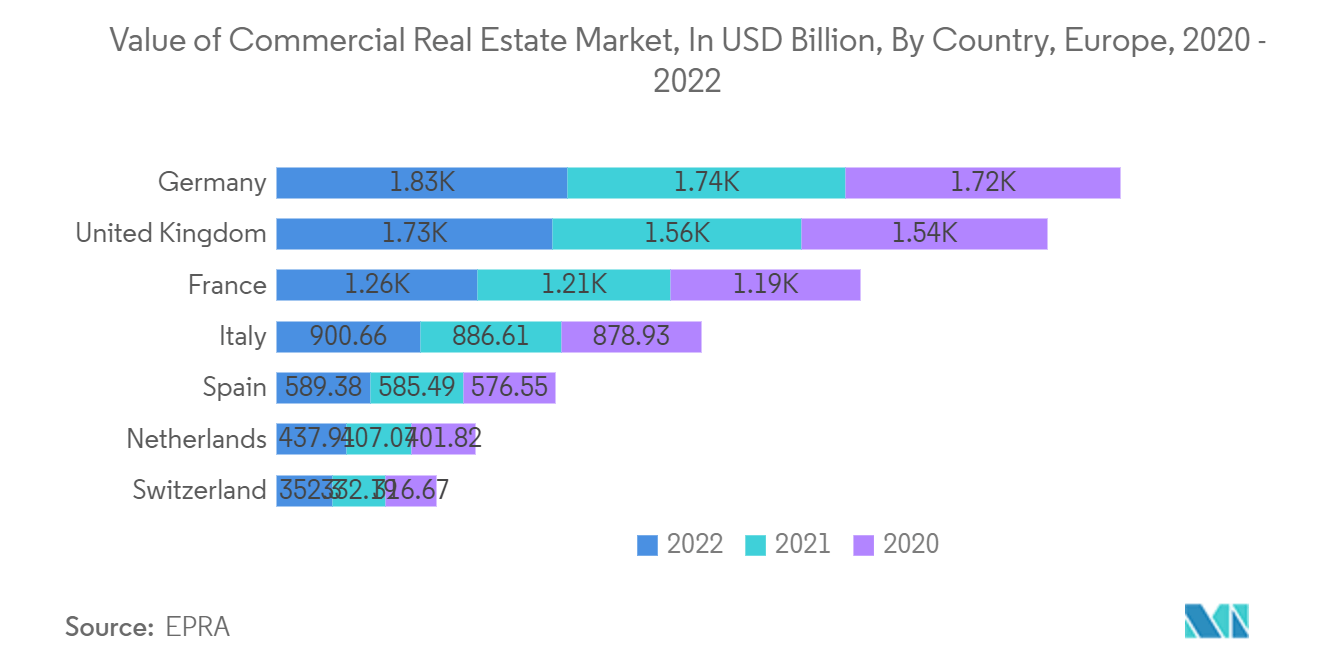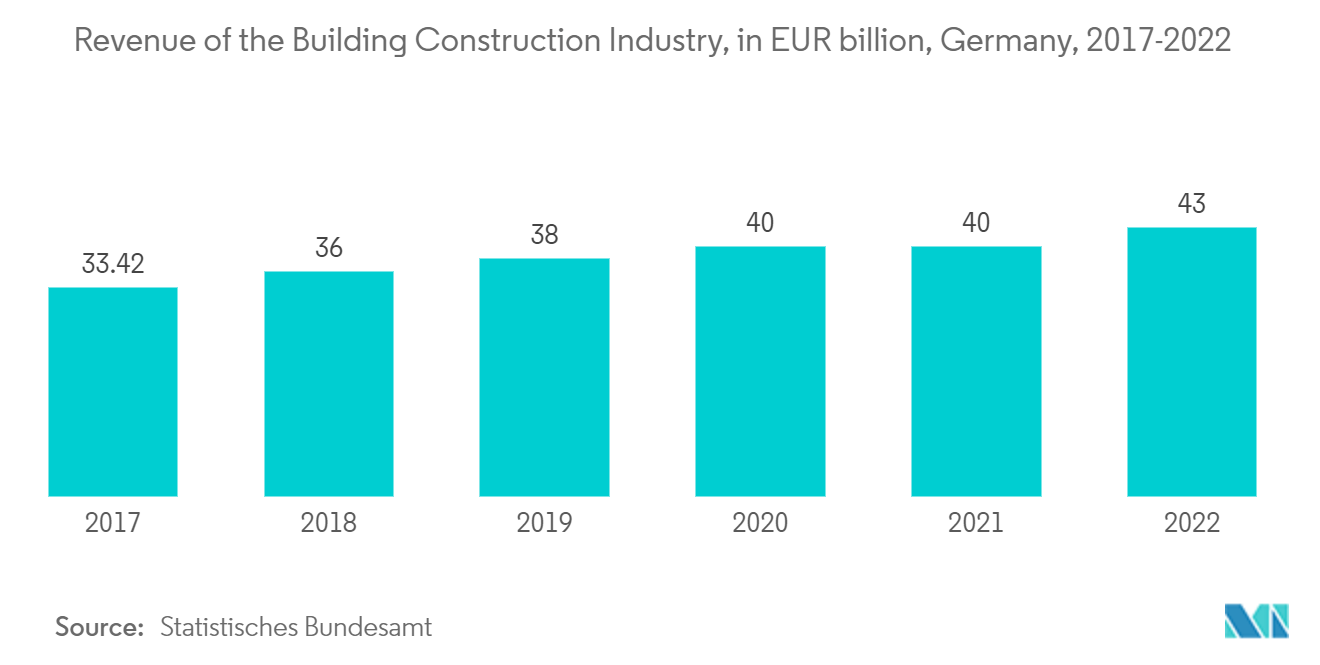Market Trends of Europe Building Automation Systems Industry
Commercial Sector to be the Largest End User
- The commercial segment includes offices, hospitals, retail space, infrastructure, etc. Advancements in various technologies and the rapid increase in traction of the Internet of Things (IoT), the integration of artificial intelligence (AI), machine learning (ML), and smart sensors and technologies in various end-uses and appliances, devices, and products and appliances in commercial buildings are key factors expected to continue to support revenue growth in the market studied.
- As per the Buildings Performance Institute Europe (BPIE), building automation is cost-effective for essentially all commercial buildings, regardless of energy prices, usage, and climatic factors, provided it is correctly installed, commissioned, and operated. According to the organization, the average net energy savings per installation are about 37% for space heating, water heating, cooling, and ventilation, and 25% for lighting.
- Further, a regulatory decree in Europe requires all large non-residential buildings to be equipped with the main building automation functions by 2025. Such regulations also positively impact the market demand for this segment. In addition, the rising security concerns in commercial buildings also act as a driver for the market. Building automation systems can help improve security in a commercial building by controlling access to certain areas and monitoring activity. These systems can also help improve safety by detecting fires and other emergencies.
- The value of the commercial real estate market is increasing, further driving the studied segment and market. For instance, according to EPRA, in 2022, the value of the commercial real estate market in the United Kingdom (UK) was over USD 1.729 trillion, which was an increase from USD 1.559 trillion in the year before.

Germany to Hold Significant Market Share
- The rise in government policies toward energy-efficient products in the country is anticipated to drive the market. For instance, the revised Building Energy Act was published in the Federal Law Gazette on August 13, 2020. The Federal Ministry for Economic Affairs and Energy and the Federal Ministry of the Interior and Community proposed the Buildings Energy Act, which the Federal Government presented. On June 18, 2020, the German Bundestag approved the Building Energy Act. The Coalition Agreement, the choices made at the 2018 housing summit, and the actions outlined in the Climate Action Programme 2030 are all implemented through the Structures Energy Act, which governs laws governing energy efficiency in buildings.
- According to the Federal Statistical Office of Germany, in Germany, 129,000 residential construction permits and 29,000 non-residential building permits were issued in 2021. This was a higher number of permits for both types of structures than the previous year. Such massive construction permits will enable local and international building automation firms to develop new products according to the requirements of customers and capture market share.
- Furthermore, the market studied in Germany has witnessed significant growth due to a rise in infrastructure development along with growing demand for green buildings in the country. According to the OECD, Germany aims to raise the share of renewables from 17% currently to more than 80% in 2050 while phasing out electricity production from nuclear power plants by 2022. Greenhouse gas emissions have been cut by 40% recently and are estimated to be cut by at least 80% by 2050.
- The country is witnessing unprecedented demand spikes for smart door locks from residential end users. Established market participants capitalize on this demand by offering advanced smart door locks with several additional features. For instance, in September 2022, Ring announced a unique wireless intercom instrument aimed at apartment dwellers. This intercom is designed to connect with most building-wide intercom systems used by apartment complexes to vet visitors and buzz them in. This intercom allows auto-verification for Amazon deliveries and authorized guests, letting them buzz themselves in without needing a door code or an extra fob.
- Moreover, increasing construction activities and the rise in disposable income increased the adoption of building automation systems among a broader consumer base in the country. According to the Statistisches Bundesamt, the construction turnover in Germany was higher than in any civil engineering segment. Building construction has had the highest revenue during the whole timeline. In 2022, it recorded EUR 42.99 billion (USD 47.07 billion) in revenue from building construction.
- Moreover, the government's measures to create a climate-neutral building stock by 2050 are insufficient; the country's German Housing Association (GdW) and the CDU Economic Council are looking to shift to decentral heating. Such developments are expected to impact the heating equipment market over the coming years, further driving the studied segment.


